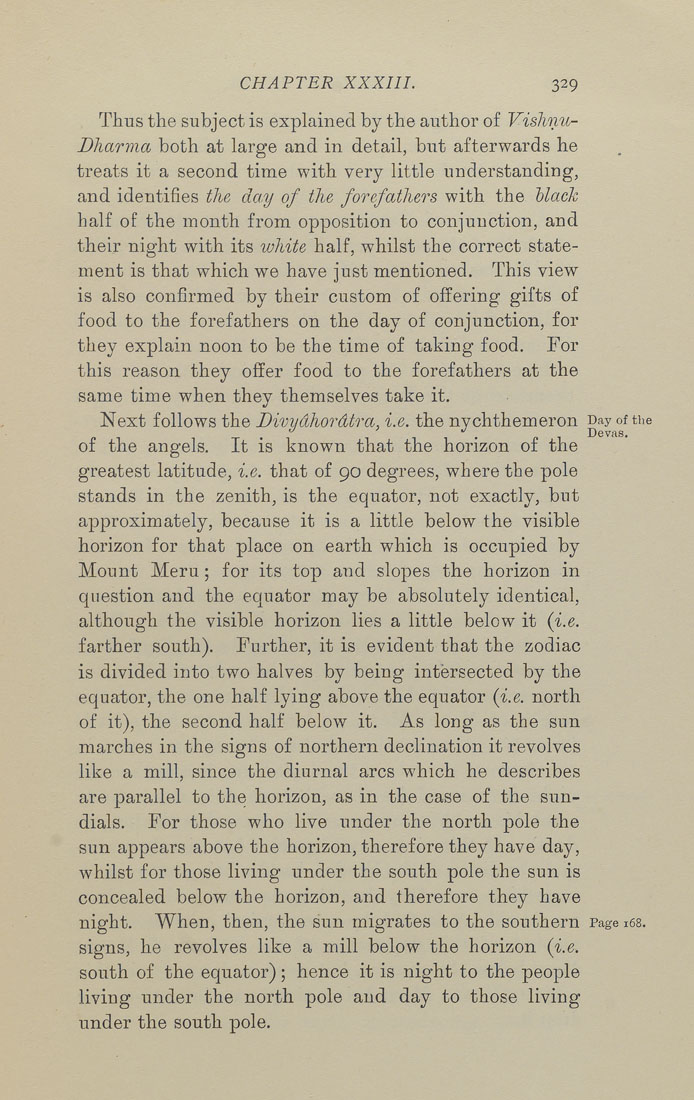Bīrūnī, Muḥammad ibn Aḥmad, Alberuni's India (v. 1)
(London : Kegan Paul, Trench, Trübner & Co., 1910.)
|
||
|
|
|
|
| Page 329 |

CHAPTER XXXIII. 329 Thus the subject is explained by the author of Vishnu- Dharma both at large and in detail, but afterwards he treats it a second time with very little understanding, and identifies the cmy of the forefathers with the black half of the month from opposition to conjunction, and their night with its white half, whilst the correct state¬ ment is that which we have just mentioned. This view is also confirmed by their custom of offering gifts of food to the forefathers on the day of conjunction, for they explain noon to be the time of taking food. For this reason they offer food to the forefathers at the same time when they themselves take it. Next follows the Diviiahordtra, i.e. the nychthemeron Day of the ^ '' , Devas. of the angels. It is known that the horizon of the greatest latitude, i.e. that of 90 degrees, where the pole stands in the zenith, is the equator, not exactly, but approximately, because it is a little below the visible horizon for that place on earth which is occupied by Mount Meru ; for its top and slopes the horizon in question and the equator may be absolutely identical, although the visible horizon lies a little below it (i.e. farther south). Further, it is evident that the zodiac is divided into two halves by being intersected by the equator, the one half lying above the equator (i.e. north of it), the second half below it. As long as the sun marches in the signs of northern declination it revolves like a mill, since the diurnal arcs which he describes are parallel to the horizon, as in the case of the sun¬ dials. For those who live under the north pole the sun appears above the horizon, therefore they have day, whilst for those living under the south pole the sun is concealed below the horizon, and therefore they have night. When, then, the sun migrates to the southern Page 168. signs, he revolves like a mill below the horizon (i.e. south of the equator); hence it is night to the people living under the north pole and day to those living under the south pole. |
| Page 329 |







